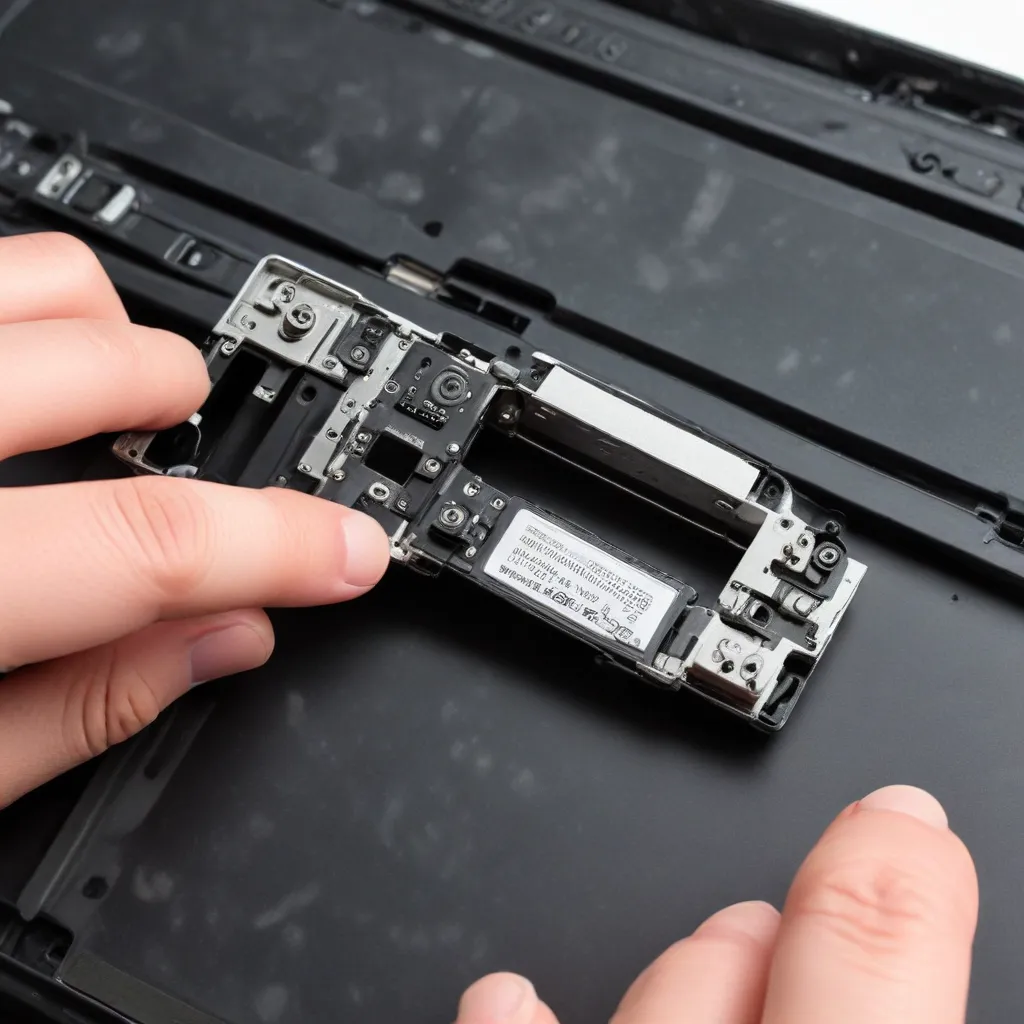
Your laptop’s display is a critical component, and the hinges that connect it to the chassis play a vital role in ensuring smooth, reliable operation. When these hinges become misaligned or damaged, it can lead to a range of issues, from cosmetic imperfections to outright failure. In this comprehensive guide, we’ll explore the common causes of hinge problems, walk you through effective diagnostic techniques, and provide step-by-step instructions for repairing or replacing these crucial hardware components.
Laptop Hardware Components
Laptop Display
At the heart of your laptop is the display, which typically consists of two main parts: the display panel and the display hinges.
Display Panel: The display panel is the screen itself, responsible for presenting visual information to the user. It is a delicate and highly specialized component that requires careful handling and protection.
Display Hinges: The display hinges are the mechanical linkages that connect the display panel to the laptop’s chassis or lid. These hinges allow the display to rotate and move, enabling you to adjust the viewing angle as needed.
Laptop Chassis
The laptop chassis is the main body of the device, comprising the lid (or cover) and the base.
Lid/Cover: The lid or cover is the upper portion of the laptop that houses the display panel and the display hinges. It is typically made of a durable material, such as plastic or metal, to protect the internal components.
Base: The base is the lower portion of the laptop, which contains the keyboard, trackpad, and other input devices, as well as the internal hardware components like the processor, memory, and storage.
Laptop Display Hinge Issues
Hinge Misalignment
Causes of Misalignment: Laptop display hinges can become misaligned for a variety of reasons, such as manufacturing defects, wear and tear over time, or even accidental impacts or bumps. When the hinges are not properly aligned, it can result in the display being slightly off-center or not flush with the chassis.
Symptoms of Misalignment: One of the most common signs of a misaligned hinge is a noticeable gap or uneven spacing between the display panel and the laptop’s lid. The display may also appear to be slightly tilted or offset to one side. In some cases, the hinge mechanism may feel loose or unstable when opening and closing the laptop.
Hinge Damage
Types of Hinge Damage: Laptop display hinges can sustain various types of damage, ranging from minor wear and tear to complete failure. This can include broken or cracked hinge components, worn-out pivot points, and even the hinge becoming detached from the chassis.
Causes of Hinge Damage: Hinge damage is often the result of excessive force or stress applied to the display, such as roughly opening or closing the laptop, dropping the device, or even regular use over an extended period. Poorly designed or low-quality hinge components can also contribute to premature failure.
Diagnosing Display Hinge Problems
Visual Inspection
Checking for Physical Damage: Begin by carefully inspecting the display hinges for any visible signs of damage, such as cracks, chips, or other physical deformities. Look for any loose or missing screws, as well as any gaps or misalignment between the hinge and the surrounding chassis.
Assessing Hinge Alignment: Examine the positioning of the display panel in relation to the laptop’s lid. Check if the display is centered and flush with the chassis, or if it appears to be tilted or offset. This can provide valuable clues about the condition of the hinges.
Functional Testing
Opening and Closing the Lid: Gently open and close the laptop’s lid, paying attention to the smoothness and stability of the hinge movement. If the hinges feel loose, stiff, or make unusual noises, it may indicate a problem.
Evaluating Hinge Stability: Apply gentle pressure to the display panel while the laptop is open, observing any wobbling or instability in the hinge mechanism. This can help identify any underlying issues with the hinge’s structural integrity.
Repairing Display Hinges
Hinge Realignment
Adjusting Hinge Screws: In some cases, a misaligned display can be corrected by carefully adjusting the screws that secure the hinges to the chassis. This may involve loosening the screws, realigning the display, and then re-tightening the screws to hold the new position.
Replacing Hinge Components: If the hinge mechanism itself is damaged or worn, it may be necessary to replace the entire hinge assembly. This typically involves removing the old hinge, aligning the new one, and securing it in place with the appropriate screws.
Hinge Replacement
Removing Damaged Hinges: To replace a damaged hinge, you’ll first need to carefully remove the old hinge assembly. This may require disassembling a portion of the laptop’s chassis, so be sure to follow the manufacturer’s instructions carefully to avoid further damage.
Installing New Hinge Assemblies: Once the old hinge is removed, you can install the new hinge assembly. Align the hinge properly, ensuring a secure fit, and then secure it in place with the necessary screws. Take care to avoid overtightening the screws, as this can lead to additional problems.
Remember, while these repairs may seem daunting, they are often within the realm of a skilled DIY enthusiast or a competent IT technician. If you’re not comfortable tackling the repair yourself, it’s always best to consult a professional or reach out to the laptop manufacturer for support.
For more information on laptop repair and maintenance, be sure to visit the IT Fix blog at https://itfix.org.uk/computer-repair/. Our team of experts is always here to help you keep your devices running smoothly.












